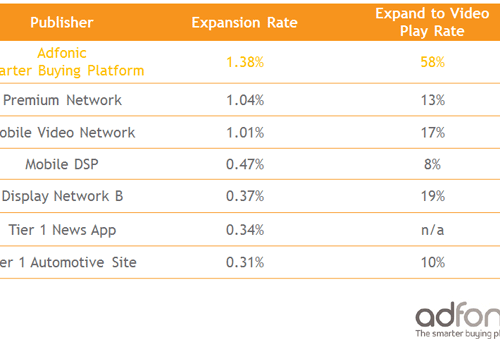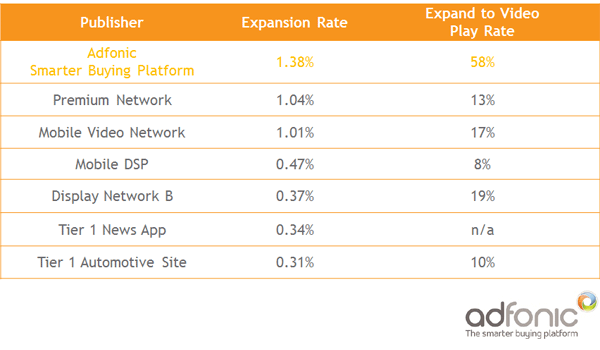Advertising used to be simple. Take a quick look at The Gate’s clever timeline, and you’ll see that it used to be as easy as carving public notices on wooden slabs, called stelae, or, post-Gutenberg, placing an ad in France’s ‘La Gazette’, the first to feature classified ads. Even pre-internet it was fairly overviewable: broadcast, outdoor or print advertising were your broad choices.
Now there is a bewildering number of channels, platforms, companies, approaches. Marc Theermann’s mobile advertising ecosystem infographic illustrates this well and, also shows the rapid pace of change: for example, just a few days ago Omnicom announced that it will become Omnicom Publicis Group so his chart will need updating yet again.
How do marketers know what to do? Who and what should they deal with, in which combination? Put simply, what’s the best way to get returns on marketing communications?
In this blog post I’d like to make the case for one combination of technologies that should be a no-brainer. Among the many types of ad format and the many ways of accessing inventory, the most effective mobile ad format is rich media, and the most effective way of buying is Real-time Bidding (RTB). Together, they are an irresistible combination. Here’s why.
The premium fallacy
In many advertisers’ minds it seems that rich media equals brand equals premium inventory. Traditionally this makes sense: simply find a premium publication whose readership matches your promotion, and you guarantee placement. If you’re a large brand or agency with plenty of money to spend on amazing creatives, and you also want brand security, this is an attractive combination.
However, you’re still making an assumption here, that the same people who visit a website are the same people who might be interested in your promotion. This is not necessarily the case. I might read The Guardian but a quick look at its website and I can see plenty of ads that do not interest me in the slightest.
The reason for this is clear: audiences are not inventory. Audiences are people. So any approach that limits itself to inferences about broad demographics and the overlap with large chunks of inventory is going to be inefficient, no matter how compelling the ad format.
The RTB reality
I’ve written plenty on Fourth Source about mobile Real-time Bidding (RTB), and provided a round-up of the current state of play and near future for RTB in May, so take a look at that post for an overview of how RTB works and what it offers digital marketers.
One point I make there, and want to reiterate here, is that RTB buys inventory through audience profiles, not broad demographics. As I said “Instead of treating inventory in blocks, or people in broad proxies such as the devices they use or the platforms they adopt, mobile RTB enables the individual ad slot to be matched to the individual user. You simply cannot get more optimised, relevant or brand-safe.”
So what of premium? If the marketer’s overriding concern, that the brand be protected from inappropriate placement, is assured, then it just becomes a question of economics. And this is where the efficiencies of programmatic buying generally and mobile RTB in particular come into their own.
Rich media plus brand equals RTB
At Adfonic, we regularly make deep dives into our big data to see where the marketplace is going. Over the past few Adfonic Global AdMetrics and AdSnaps studies we have discovered a lot about how mobile RTB behaves, and about rich media’s effectiveness, and how the two work together. The evidence is overwhelming: rich media and RTB work together astonishingly well, and together they outperform premium while ensuring brand safety.
Here are the facts:
- Rich media can outperform standard banner ads. This is a position that is standard industry knowledge today. We have seen clickthrough rates (CTRs) for rich media ad formats around four times that of standard banner ads, and this seems to be the industry consensus from other sources too. Rich media, of course, also carries a whole raft of soft metrics such as brand awareness and intent to purchase which standard banners do not.
- RTB outperforms non-RTB for every audience vertical. When we looked more closely at RTB in our Mobile RTB AdSnap, we found that CTRs were higher for RTB-enabled inventory than non-RTB for every audience vertical, bar none. This ranged from the strongest performer, Style & Fashion advertisers who enjoyed an average uplift of 231%, to even the smallest uplift being for Business & Finance, at 48% uplift. Across all verticals the average CTR uplift for RTB when compared to non-RTB, was 97%, almost double the CTRs for non-RTB inventory.
- RTB can outperform premium. This was a major finding, in which we ran a campaign through RTB driven by smart algorithms and found that it significantly outperformed premium. We saw expansion rates 33% stronger and play rates 450% stronger than premium placement, a truly compelling proposition for marketers who want to know that their ads are reaching the right audiences. You can still see the slide online with the full figures in the slideset I presented at Mobile World Congress last year, but here’s the key graphic below:

- RTB plus rich media outperforms non-RTB, non-rich media. Again, in the RTB AdSnap, we revealed that when bought through mobile RTB exchanges, rich media yields CTRs 218% that of non-RTB, non-rich media. This is because of the quality and quantity of data on the RTB exchanges that enable the right bids to be made for the right impressions at the right price levels.
Over to you
As a digital marketer it is of course up to you to decide how best to spend your money, or indeed that of your clients.
I entirely understand why rich media is so attractive to marketers – we see its effectiveness every day. And I do sympathise with marketers anxious to ensure that they have premium’s peace of mind.
But there is no reason for them to pay premium prices for this peace of mind. They can look to RTB for this security, while reaching audiences instead of inventory. And the combination of RTB plus rich media is the most effective, efficient way in which to do this.







